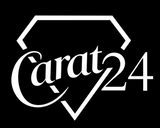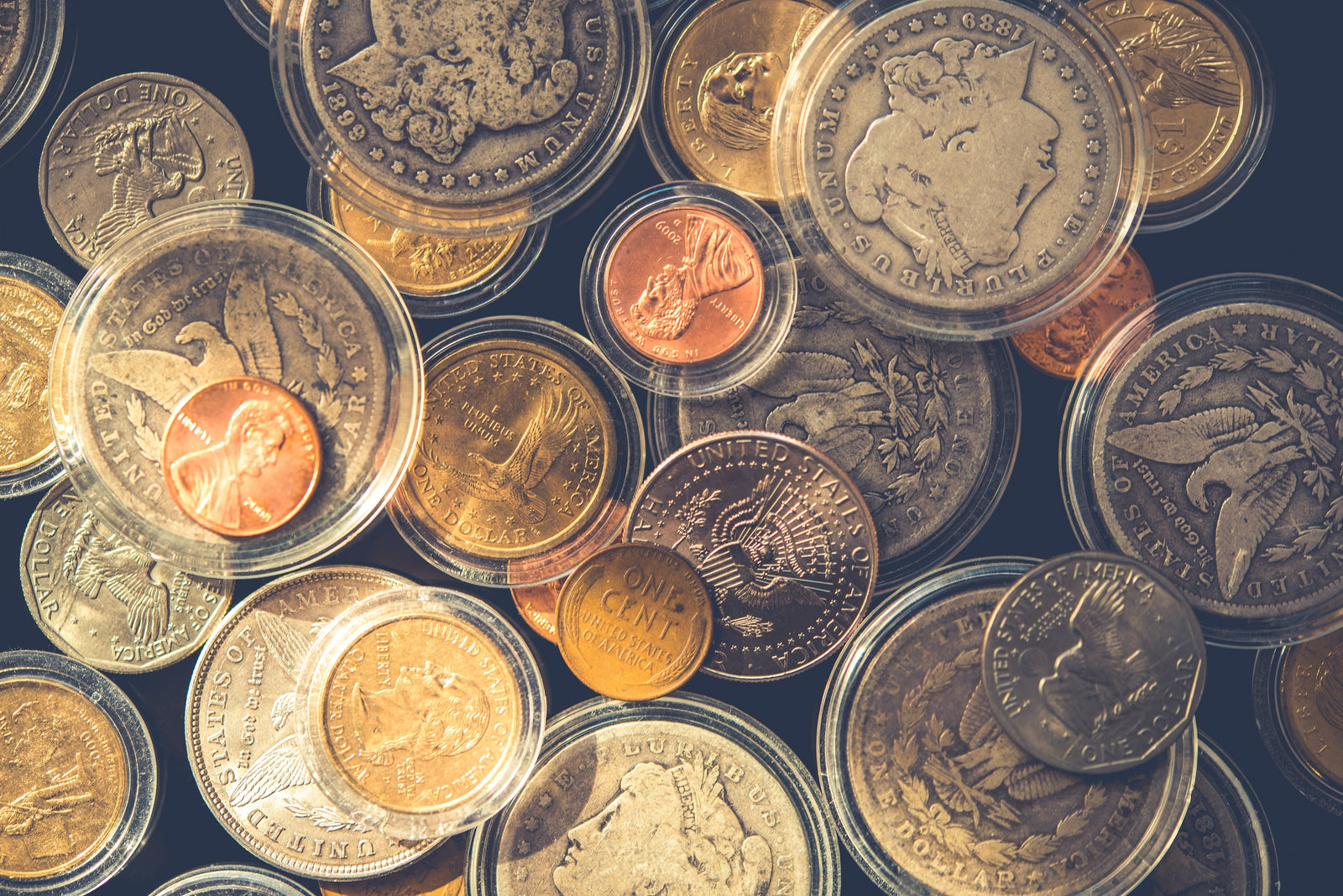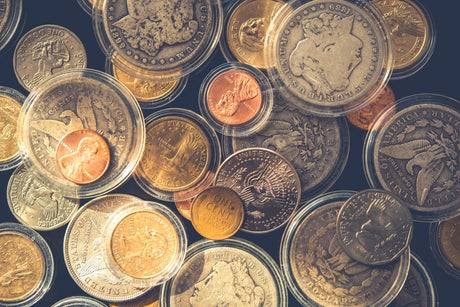Welcome to our journey into the fascinating world of coin collecting! At Executive Coins in Meridian, Idaho, we're passionate about unearthing the stories and values hidden in everyday change. This blog is your guide to discovering and understanding the treasures in your pocket or coin jar.
It contains 5 Key Sections:
- Section 1: Understanding the Basics
- Section 2: Silver Coins - Quarters, Dimes, and Half Dollars
- Section 3: Special Focus on Nickels - War Nickels
- Section 4: Pennies Worth More than a Cent
- Section 5: Tips for Collectors
Based in the heart of Meridian, Idaho, we've cultivated a deep appreciation for the rich history and intrinsic value of coins, especially those minted in 1964 and earlier. Our blog is crafted to enlighten both budding numismatists and seasoned collectors, offering insights into the nuanced world of coin collecting.
In this guide, we'll delve into the significance of silver coins like quarters, dimes, and half dollars from the pre-1965 era, revealing how their silver content defines their worth. We'll then spotlight the unique and historically significant war nickels, minted during the tumultuous years of World War II. Our journey will also explore the realm of pennies, particularly the rare 1943 copper penny and other valuable misprints and errors.
For those new to this exciting hobby, we offer practical tips on starting a collection, maintaining and storing your coins, and resources that will enrich your numismatic journey. From the streets of Meridian to the wider world, every coin tells a story, and we're here to help you uncover it.
Join us as we embark on this numismatic adventure, uncovering the hidden gems of yesteryear and the stories they carry. Whether you're in Meridian or beyond, there's a world of treasures waiting to be discovered!
Section 1: Understanding the Basics
Introduction to Coin Collecting
Coin collecting, or numismatics, is more than a hobby; it's a gateway to the past. Each coin is a piece of history, offering insights into the economic, political, and artistic trends of its time. For many, the allure of coin collecting lies in the thrill of the hunt and the joy of discovery, making every coin a potential treasure.
Historical Context: The Significance of 1964
The year 1964 marks a pivotal moment in U.S. numismatic history. Prior to this year, most American coins, including dimes, quarters, and half dollars, were minted with a substantial silver content. This was a tradition that linked modern coinage to ancient practices. However, rising silver prices and a growing discrepancy between the face value and the metal value of coins led to a significant change. In 1964, the U.S. Mint decided to shift away from silver to cheaper metals, marking the end of an era for silver coinage.
Why Pre-1964 Coins?
Coins minted before 1964 are particularly prized by collectors and investors alike. These coins are not just currency; they are artifacts of a bygone era, embodying the economic conditions and craftsmanship of their time. The intrinsic value of these coins comes from their silver content, which often surpasses their nominal face value, especially in today's market. Collecting these coins is not only a hobby but also a form of historical preservation.
The Role of Silver in Coin Value
Understanding the value of pre-1964 coins requires a basic knowledge of their silver content. Silver has been a highly valued metal for thousands of years, known for its durability and beauty. In coins, it adds both to the aesthetic appeal and the intrinsic value. For instance, a pre-1964 dime, quarter, or half dollar contains 90% silver, making it worth significantly more than its face value based on the current silver prices. This silver content is what drives the market for these coins and is a key factor in assessing their worth.
Section 2: Silver Coins - Quarters, Dimes, and Half Dollars
A Closer Look at Silver Quarters, Dimes, and Half Dollars
Silver quarters, dimes, and half dollars minted in 1964 and earlier are not just pieces of change; they are mini-treasures hiding in plain sight. These coins were composed of 90% silver, a fact that significantly enhances their value in today's market. Notably, a quarter from this era isn't just 25 cents in value; its worth is tied to the current silver prices, making it a small investment.
Identifying Valuable Silver Coins
To identify these valuable silver coins, look for specific mint marks and dates. Coins minted before 1965 will have a higher silver content. It's also important to learn about the different mint marks - for instance, a coin with a 'D' was minted in Denver, while an 'S' indicates San Francisco. These details can sometimes add to a coin's collectible value.
Calculating Silver Content and Value
Understanding the silver content in these coins is crucial for collectors and investors. Each $1 face value (for example, four quarters, ten dimes, or two half dollars) from this era contains approximately 0.715 ounces of silver. This means if you have $1 in pre-1965 dimes, quarters, or half dollars, you're holding over half an ounce of silver. The market value can be calculated based on the current price of silver, which fluctuates daily.
Rare Finds and Collectible Varieties
While all pre-1964 silver coins have intrinsic value due to their silver content, some are more collectible than others. Key dates, rare mint marks, and unique varieties can enhance a coin's value significantly. For instance, the 1916-D Mercury dime or the 1932-D Washington quarter are highly sought after by collectors. Condition also plays a crucial role; coins in uncirculated or mint condition are far more valuable than those with wear and tear.
Section 3: Special Focus on Nickels - War Nickels
The Unique Story of War Nickels
During World War II, the demand for nickel in war production led to a significant change in the composition of U.S. nickels. From mid-1942 to 1945, 'war nickels' were produced with a unique alloy that included silver. Unlike regular nickels, these coins contain 35% silver, making them an anomaly in the world of nickel coinage and of particular interest to collectors.
Identifying War Nickels
War nickels can be identified by their distinctive features. These coins were minted between 1942 and 1945 and have a large mint mark above the Monticello building on the reverse side. The mint marks include 'P' for Philadelphia, 'D' for Denver, and 'S' for San Francisco. This prominent mint mark is a key identifying feature, as it was not used on nickels either before or after this period.
The Value of War Nickels
The value of war nickels is twofold: they have both historical significance and intrinsic silver content. While they may not be as valuable as some rare silver dimes or quarters, they offer an affordable entry point for new collectors interested in World War II-era coinage. The silver content also ensures that their value remains above that of regular nickels, making them a small but worthy investment.
Collecting and Preserving War Nickels
Collecting war nickels can be a fascinating pursuit, particularly for those interested in World War II history. When collecting these coins, consider their condition and any unique variations. As with all coins, proper storage and handling are crucial to preserve their condition. Acid-free holders and controlled environments are recommended to protect the coins from damage and deterioration.
Section 4: Pennies Worth More than a Cent
The Rarity of the 1943 Copper Penny
One of the most sought-after rarities in the coin world is the 1943 copper penny. In a fascinating historical quirk, a few copper pennies were mistakenly struck in 1943 when the U.S. Mint was supposed to be using steel for pennies during World War II. These rare copper pennies are highly valuable, with some fetching staggering prices at auctions.
Identifying Misprints and Errors in Pennies
In addition to the 1943 copper penny, other misprints and error coins can be quite valuable. These include double dies, off-center strikes, and coins with other minting anomalies. Collectors often seek these unique pennies for their rarity and the stories they tell about the minting process.
Other Rare Pennies to Look Out For
Beyond the 1943 copper penny, there are other notable collectible pennies, such as the 1909-S VDB Lincoln cent, the 1955 double die penny, and older Indian Head pennies. Their value depends on their rarity, condition, and demand among collectors.
Section 5: Tips for Collectors
Starting a Coin Collection
Beginners interested in collecting pre-1964 coins should start by familiarizing themselves with the basics of coin grading and mint marks. Visit local coin shops, join coin collecting clubs, and participate in online forums to learn from experienced collectors.
Storage and Maintenance of Coins
Proper storage is essential for preserving the quality of coins. Use acid-free holders, albums, or safe deposit boxes to protect your coins from environmental damage. Handle coins carefully, preferably with gloves, to avoid leaving fingerprints or causing wear.
Resources and Tools for Coin Collectors
There are many resources available for coin collectors, from price guides and websites to coin shows and auctions. Utilize these resources to stay informed about market trends and to connect with the numismatic community.
Conclusion
Collecting pre-1964 coins is not only a fascinating hobby but also a journey through history. Whether it's the silver content of dimes and quarters or the unique stories behind war nickels and rare pennies, each coin offers a glimpse into the past. We encourage readers to dive into the world of coin collecting and discover the rich stories each coin holds.
Additional Resources
- Books: "A Guide Book of United States Coins" by R.S. Yeoman, "The Official Red Book."
- Websites: Professional Coin Grading Service (PCGS), Numismatic Guaranty Corporation (NGC).
- Forums and Clubs: CoinTalk, American Numismatic Association (ANA).
- Events: Local coin shows, national numismatic conventions.


